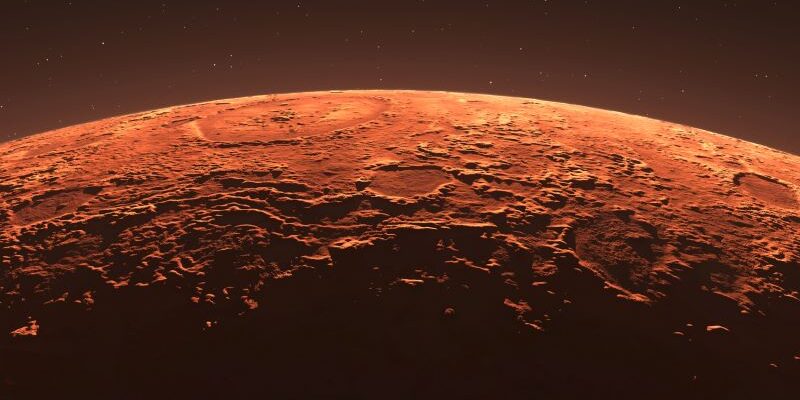| By Gale Staff |
Mars has held a fascination for people since ancient times, and for centuries they’ve wondered, surmised, hoped, or feared that it was inhabited. Even telescopes didn’t resolve the issue completely. In fact, the pattern of straight lines that can be seen on the surface of Mars convinced astronomer Percival Lowell and his admirers at the turn of the twentieth century that those lines were water canals dug by Martians. By the time the National Aeronautics and Space Administration (NASA) started preparing for a mission to Mars, everyone knew that there was no Martian civilization, but there was still hope that some kind of life might exist on Mars or might have existed at one time. The Viking 1 space probe, which launched 50 years ago this week, on August 20, 1975, was the first spacecraft to successfully land on Mars and start to give us answers about what the planet is like. Teachers and librarians wanting to help students understand the history of space exploration, and especially Martian exploration, will find a wealth of resources in Gale In Context: U.S. History.
The interest that Mars has provoked is due, at least in part, to its red color, which helps it stand out in the night sky. Ancient civilizations connected the color with the idea of blood, and as far back as the Sumerians, people associated Mars with wars or plagues or the blood of fallen soldiers. Lowell’s popular theories inspired a host of science fiction writers to feature Martians in their stories. Arguably, the most famous was H. G. Wells’s War of the Worlds, which imagined Martian aliens invading Earth. Ray Bradbury’s Martian Chronicles portrayed an invasion in the opposite direction, with humans escaping to Mars and accidentally spreading their germs among the Martian population.
The Soviet Union’s 1957 launch of the Sputnik satellite ushered in the age of space exploration, and soon both the Soviet Union and the United States were sending probes to explore Mars up close. The Soviet Union launched its Mars 1 probe in 1962, but lost contact with it before it reached the planet. NASA’s first Mars probe, Mariner 3, didn’t fare any better as its solar panels failed to unfold and it died for lack of battery power. Mariner 4, however, successfully flew within 10,000 kilometers of Mars in 1965 and sent back 21 photographs of the surface, giving humans the first relatively close-up views of a planet they had been watching for millennia.
The Viking mission was much more ambitious. It involved two different spacecraft, Viking 1 and Viking 2, that were launched within three weeks of each other in August and September of 1975, arriving at Mars 11 months later. Each craft had an orbiter that circled the planet and a lander that would be deployed to the Martian surface after a suitable spot was located. The landers, which ended up being located on opposite sides of the planet, could perform a range of activities: take up-close photographs, collect and analyze soil samples, and send weather reports.
Most importantly, the landers had science experiments that could detect whether microbes were living in the soil. Scientists still held out hope that there might be signs of life on Mars. Initial data from the landers indicated that the planet might be filled with microbes, but a closer analysis showed the opposite—not only did there not appear to be life on Mars, at least not in those locations, but the atmosphere was mostly carbon dioxide and therefore couldn’t support human life if humans ever made it to Mars.
It would be another 20 years before NASA returned to Mars, but it has sent a series of orbiters and landers since then. Scientists have scaled back their goals in recent missions. Rather than try to determine if life ever existed on Mars, the probes have, among other goals, tried to find areas where water could remain in a liquid state, which would be pivotal for later missions.
Meanwhile, people like Andy Weir, author of The Martian, and Robert Zubrin, founder of the Mars Society, have imagined and advocated for human missions to Mars. One group even interviewed potential applicants before going bankrupt (which was probably fortunate for the applicants). Meanwhile, Elon Musk’s SpaceX has blown up all kinds of rockets during its quest to build one powerful enough to support regular voyages to Mars and the eventual establishment of a Martian colony. The Mars fascination continues.
About the Author
J. Robert Parks is a former professor and frequent contributor to Gale In Context: U.S. History and Gale In Context: World History who enjoys thinking about how our understanding of history affects and reflects contemporary culture.


